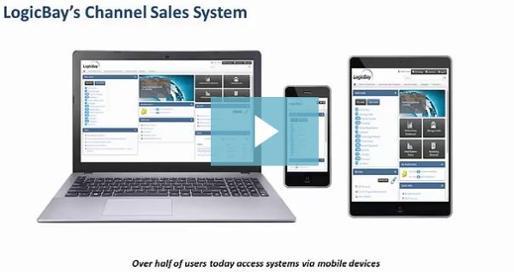Just because your organization relies on indirect sales channels to do the selling doesn't mean your partners have to do all the heavy-lifting. Given the ways that buyer behavior has changed, the role of your partners is less about demand generation and more about closing business. This means they will be relying more on your ability to help them market your products and services.
In today's wired and continuously-connected world, vendors who go out of their way to support channel partner marketing efforts are almost certain to be rewarded in multiple ways. Besides simply increasing sales - which is really the primary goal—you can easily separate yourself as a vendor that sales partners truly want to represent. Whether you're fighting for market share, or looking to extend into new verticals, that sort of distinction can easily be the deciding factor.
Five Cornerstones Of Collaborative Channel Partner Marketing Efforts1 - Provide the right content at the right time
Buyers today are increasingly looking for customized solutions that fit their specific business\organization, and often have detailed questions that go beyond the standard customer-facing literature. The more technical documentation you can make available to local sales staff, the more readily they'll be able to handle these inquiries in a quick and efficient manner that reflects well on your entire organization.
Plus, sales cycles are growing increasingly shorter as buyers have completed up to 70% of their buying decision before engaging at all with a sales rep. Being able to address these issues ASAP tells them your partnership is prepared to help close more business.
2 - Have a wide variety of marketing materials ready for use
Unless your partners have national exposure, your local sales channels probably do not have many resources to invest in marketing content creation. So this is another area where the more you can do for them, the better.
Beyond the standard fliers and brochures and one-sheets, make plenty of inbound marketing materials available as well. Consider creating pieces such as audio interviews with designers, or video documentaries of your facilities, which can then be reused by local groups along with their own materials.
Also, keep a library of blogs and emails and similar written works. These are easily repurposed over and over throughout your ecosystem.
SEE ALSO: Collaborative Channel Partner Marketing
3 - Do your own market and industry research
Again, this is something most channel partner marketing departments often can't afford to do themselves. At the top level, it's relatively easy to conduct studies and customer research, to discover more about how people are using your product/service, as well as what challenges they're facing which aren't currently being addressed.
Similarly, don't neglect research on your industry as a whole, especially the competition. Being able to point your channel partners towards weak points in the competitions' marketing or product focusing can open up entirely new sales avenues for them.
Also, any and every drop of customer data gleaned from actual sales is invaluable when formulating marketing plans. Encourage your partners to share their own insights and contribute to the knowledge pool.
4 - Leverage SEO for your partners' benefit
Just because your sales are indirect doesn't mean SEO isn't useful! When you've got a strong collection of content on your own homepage that's attracting leads, that's an excellent way to funnel those leads straight to their local vendors. Collect leads on your page, and establish pipelines for getting them to the proper local sources.
Likewise, highlight local issues. Occasionally use your blog and other content marketing efforts to point out local partners or events happening in their area which relate to your market. It spreads the SEO juice around.
5 - Maintain a strong social media presence
Buyers are aware that the vendors are the top level of the ecosystem, but they can still be hesitant about vendors who seem too stand-offish. Those who avoid making a social presence for themselves can create the appearance of absentee landlords, so to speak, who may not care about the experiences at the ground level.
Maintaining your own social media presence ensures that you don't fade into the shadows, and that customers know you still care about them despite rarely working with them directly. It's also an excellent way to keep in touch with "everyday" usage of your product\service, and get feedback on how it might be tweaked to better meet their needs.
Plus, of course, at any point you can also refer customers or inquiries to local social pages for more information or sales details.
If you are interested in learning more about how a Partner Relationship Management (PRM) technology platform can help your partners be more successful, check out the video below:

